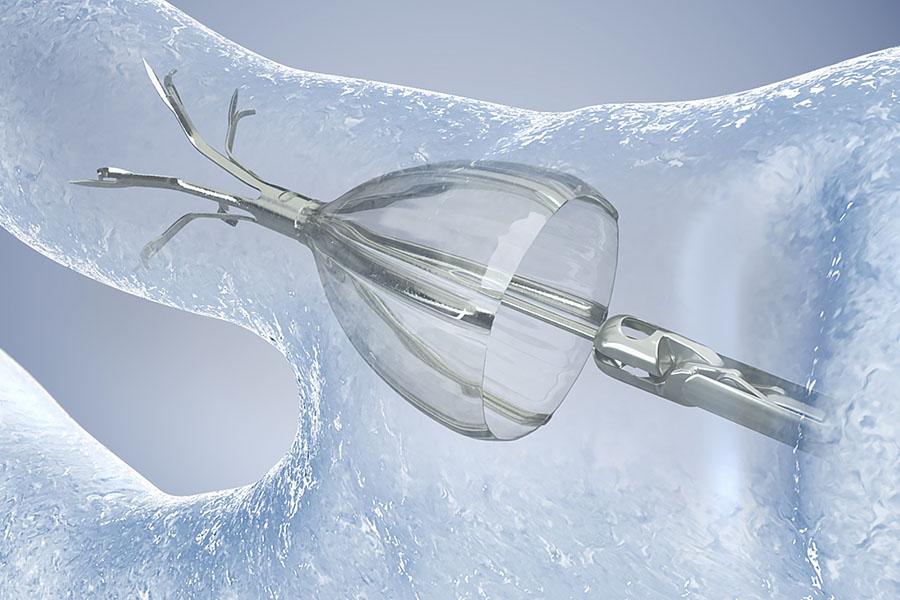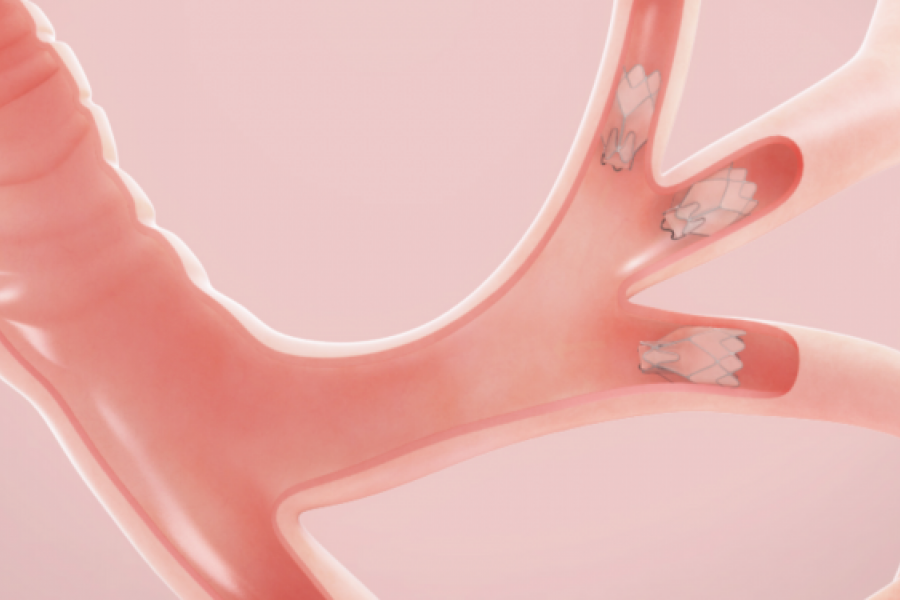Bronchoscopic lung volume reduction is a minimally invasive procedure to treat emphysema that is associated with severe hyperinflation, a form of chronic obstructive pulmonary disease (COPD).
During the procedure, endobronchial valves are implanted in the airways of the lungs while a patient is asleep under general anesthesia. The procedure involves no cutting or stitches and the patient typically feels no pain.
What to Expect
To implant endobronchial valves, a special tool called a bronchoscope is guided through the nose or mouth while the patient is asleep into the lungs. The doctor will use a camera at the end of the bronchoscope to deliver the valves to the target sites in the lung.
Once implanted, the valves block off diseased parts of the lung and allow healthier regions to expand and function better. This reduces the air that becomes trapped in the lungs (known as hyperinflation), which is what makes breathing hard for emphysema patients.
The procedure takes roughly 60 minutes, and patients have reported that they experience relief soon after.
In two Temple-led studies that tested the valves, almost 50% of patients had improved lung function. Many who received the valves could breathe easier, exercise more and had a better quality of life.
Temple pulmonologists use two kinds of endobronchial valves in a bronchoscopic lung volume reduction procedure: the Spiration® valve and the Zephyr® valve.
- Spiration® valves are umbrella-shaped, one-way valves that prevent airflow into the target lobe of the lung. Trapped air and secretions escape naturally along the airway wall.
- Zephyr® valves function as a one-way valve that closes on inhalation to avoid air entering the diseased portion of the lung, then opens on exhalation to release trapped air.
Since both valves are similar in function and objective, your pulmonologist will decide which valve may potentially work best for you. Pulmonologists base the decision on your condition, lung test findings and CT scan results.
View images of each valve in this photo slideshow:


